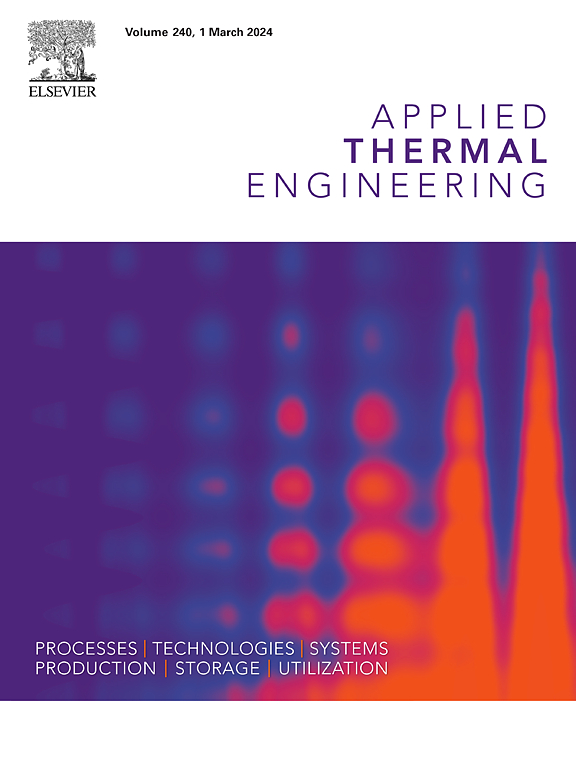Thermal performance of heat storage-enhanced PCM energy pipe pile with heat conduction fin
IF 6.1
2区 工程技术
Q2 ENERGY & FUELS
引用次数: 0
Abstract
Improving heat transfer efficiency while maintaining operational safety is crucial for energy piles. This study proposes a novel energy pipe pile (EPP) enhanced with phase change material (PCM), integrating metal fins and spiral heat exchange pipes to optimize the PCM performance further. Laboratory-scale experiments were systematically conducted to evaluate the proposed EPP’s heat transfer performance and thermal response. Additionally, numerical simulations were conducted for three pipe configurations to investigate their effects on heat transfer efficiency, temperature distribution along the pile shaft, and PCM utilization under continuous and intermittent operational conditions. Comparative analyses considering thermal storage enhancement, inlet temperature variations, and soil saturation demonstrated a 7.84% improvement in heat exchange capacity compared with the ordinary designs. The integration of PCM and metal fins altered internal thermal pathways, significantly reducing temperature fluctuations and thermal stress variations within the pile. Numerical results indicated PCM utilization efficiencies of 49.06%, 22.2%, and 56.33% for the 5U in series (5US), 5U in parallel (5UP), and spiral configurations, respectively. In terms of temperature uniformity, the 5US configuration exhibited the largest deviation (86%) between the local minimum and average cross-sectional temperatures. In contrast, the spiral and 5UP configurations exhibited substantially lower deviations of 26.64% and 22.51%, respectively. The spiral-type configuration demonstrated superior heat transfer performance, optimal PCM utilization, and superior temperature uniformity. Therefore, integrating PCM with metal fins offers a promising approach for enhancing energy piles’ thermal performance and operational reliability.
求助全文
约1分钟内获得全文
求助全文
来源期刊

Applied Thermal Engineering
工程技术-工程:机械
CiteScore
11.30
自引率
15.60%
发文量
1474
审稿时长
57 days
期刊介绍:
Applied Thermal Engineering disseminates novel research related to the design, development and demonstration of components, devices, equipment, technologies and systems involving thermal processes for the production, storage, utilization and conservation of energy, with a focus on engineering application.
The journal publishes high-quality and high-impact Original Research Articles, Review Articles, Short Communications and Letters to the Editor on cutting-edge innovations in research, and recent advances or issues of interest to the thermal engineering community.
 求助内容:
求助内容: 应助结果提醒方式:
应助结果提醒方式:


